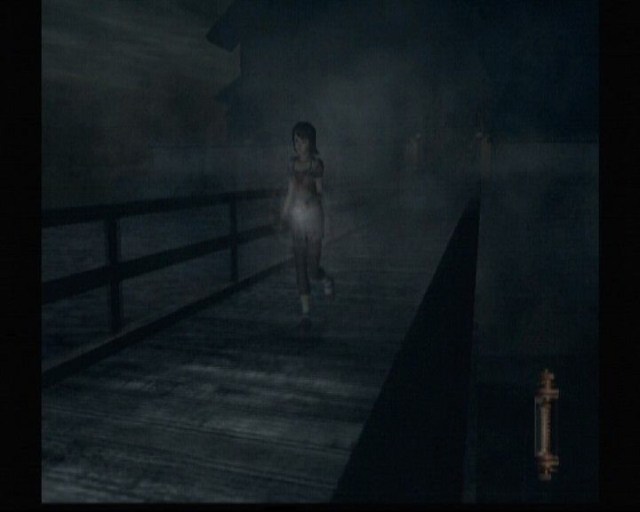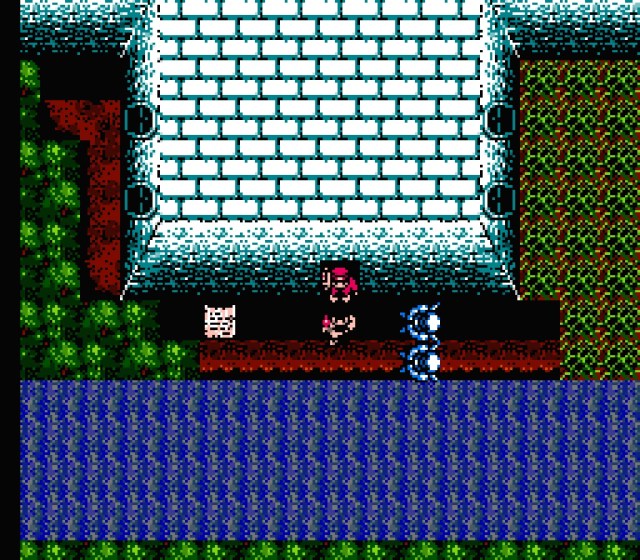The best cult classic horror games
It’s been a few years since I discovered I’m no longer afraid of horror games and have been consuming them non-stop. Right now, I have Clock Tower 3, Silent Hill 2: Restless Dreams (Xbox version), and Escape from Bug Island (don’t ask) sitting on my desk, waiting to be filed away and then played. I’ve dug into the depths of horror video games and found the sticky but sweet delicacies at the bottom.
It’s very hard to define what makes a “cult classic.” It’s difficult to really nail down a clear definition, so depending on your perspective, some of these might not fit. However, one criterion that I did stick to is that the game must be over 10 years old. A lot of great horror games have been released in the past decade (especially indie titles), but I don’t think you can call something a cult classic when the loyalty of its fanbase is still unproven, and it’s not even old enough to be called “classic.”
Nevertheless, here are my picks for the best cult classic horror games. These aren’t in any particular order.

Rule of Rose (PS2, 2006)
Rule of Rose was launched unloved into the world near the end of the PS2’s lifespan. Its combat is butt, it’s thematically outside what was popular in horror at the time, and, to top it off, it was subject to a huge, unfounded controversy based on what a few people imagined they saw in the opening cutscene. Or maybe they made it all up since this was 2006, and accusing video games of corrupting youth was a trendy thing to do.
Anyway, did I mention the combat is butt? I know that sluggish, unwieldy combat in survival horror is something of a hallmark for the genre, but Rule of Rose goes beyond that with horrendous collision detection. It is not fun to play.
However, it does effectively tell a unique and unconventional story in the world of horror. Rather than simply be a game about monsters, you’re bullied by children who, in a lot of ways, are worse than monsters. The story takes you through an orphanage, across an airship, but always under the heel of some despicable children.

Eternal Darkness: Sanity’s Requiem (Gamecube, 2002)
In the depths of the Gamecube library, Eternal Darkness: Sanity’s Requiem is legendary. An ambitious horror title that hops between different time periods, there isn’t anything quite like Eternal Darkness. While its storyline borrows heavily from the Elder God mythos that H.P. Lovecraft loved to wade around in, the constantly changing setting and gameplay focus made it an extremely memorable game.
Perhaps its best-loved feature is its insanity effects. As your “Sanity Meter” depletes, the game starts playing visual tricks on you. This might include your character spontaneously dismembering, or perhaps it will look like someone changed the channel on your TV. It was an effective way to make you feel uneasy as you sat in a room lit only by the glow of your CRT.

Harvester (PC, 1996)
While it’s really not horrific in the traditional sense, Harvester is a deeply disturbing game that will nestle into your brain matter and keep you on edge. Sure, it looks extremely dopey with its digitized actors. At first, it may seem silly with its strange incorporation of 1950s values and a world that feels off in a way that is both obvious in subtle. Indeed, there is a tonne to find funny, both intentionally and unintentionally. But that’s part of the way it gets in your head.
Beneath its kusoge (crap game) exterior, Harvester is a raw and thought-provoking experience. It’s a deep-fried onion that gradually unfurls before your eyes just before a chestburster latches onto your face. It is unapologetic, uncompromising, and inhuman in its effort to get its message across. It’s fascinatingly uncomfortable.

Fatal Frame 2: Crimson Butterfly (PS2/Xbox, 2003)
The Fatal Frame series is generally well respected, but it’s never really been able to gain any mainstream traction, especially in North America. Part of this might be because its horror is distinctly Japanese. However, those who took a chance would find some of the most surreal horror of its generation.
The bulk of Fatal Frame 2 involves Mio Amakura exploring a lost and abandoned village. As is standard, Mio is armed only with the Camera Obscura, which can be used to fight off angry ghosts.
The Fatal Frame series has had five core entries, but many people consider Fatal Frame 2: Crimson Butterfly to be the best entry.

Technically, Sweet Home is based on a Japanese movie of the same name, but when it came to building a game around it, the developers at Capcom got incredibly creative. On the surface it’s an RPG, but if you pull up the floorboards, you find the early signs of the survival horror genre. Your goal was to guide a group of students through a big haunted manner, and should any of them die in combat, that was it. There was no reviving them.
Resident Evil would later lift some inspiration from Sweet Home, but this would largely be lost on North American audiences. The game stayed exclusive to the Famicom and never came West.

Speaking of never coming West, Clock Tower is another game that set numerous standards but never got a Western launch. Technically, there is a game called Clock Tower on PS1, but that’s actually a localization of Japan’s Clock Tower 2.
As for the original, Clock Tower was one of the progenitors of the survival horror genre. You are tasked with guiding Jennifer Simpson as she attempts to escape from an old mansion (common horror plot). While solving puzzles, you’re pursued by a diminutive little man carrying a massive set of scissors. Jennifer is completely incapable of defending herself, so you need to use hiding spots to try and avoid direct confrontation. This is something that would become a fixture in the horror game genre.
While Clock Tower has long languished as a Japan-exclusive title, Wayforward and Limited Run Games are finally bringing a port westward in 2024.

Silent Hill: Shattered Memories (Wii/PSP, 2009)
Silent Hill is one of the most popular series in video games, but its reputation took a dive rather quickly and accelerated when Konami shuttered Team Silent in 2004 and started handing the property over to other studios. While some of the post-Team Silent games aren’t bad, none of them have really reached the reception that the first few Silent Hill titles did.
2009’s Silent Hill: Shattered Memories is either emblematic of this decline, or it’s the exception, depending on who you ask. Looking back, it was a pioneer in the walking simulator genre, as combat is relegated to specific areas of the game. Most of the time, you were just walking around, solving puzzles and picking up bits of lore.
It was also extremely good at it, presenting a mystery that gradually unravels while putting you through a number of situations that change depending on invisible criteria. While it technically is a retelling of the events of the first game, Silent Hill: Shattered Memories does a lot to innovate and differentiate itself from the rest of the series. Maybe that’s why it’s so beloved by those that connected with it.

Deadly Premonition (Xbox 360, 2010)
When it first released in 2010, Deadly Premonition was equally mocked and celebrated. Outwardly, it presents itself as an extremely awkward production, featuring some unfortunate graphics and animation topped off by bizarre voice acting and sound quality issues. To be sure, the actual horror on display isn’t all that great.
However, if you dig deeper and really look at Deadly Premonition, you find some unique themes and concepts. The introductory cutscene of the strange protagonist, Francis “York” Morgan, is, I feel, one of the best committed to a visual medium, even with its unfortunate eccentricities. Driving around a needlessly large map of Greenvale, listening to York speak to a seemingly imaginary friend named Zach while doing various sidequests is strangely compelling. Deadly Premonition isn’t “so bad, it’s good,” it’s just plain good.

Condemned: Criminal Origins (Xbox 360/PC, 2005)
Condemned: Criminal Origins had the benefit of being released as an Xbox 360 launch title in 2005. As such, it was almost guaranteed to sell well. After receiving a sequel in 2008, however, it was seemingly forgotten. What it is remembered for is its fantastic combat system, which somehow captured the impact of close-quarters fighting in a first-person perspective.
Strangely, the grounded elements of Condemned: Criminal Origins is where it succeeds the most. When it feels like you’re helpless against crazed human opponents, the game really shines. Whenever the plot dips into the supernatural, it gets a little harder to stomach. Thankfully, that’s pretty rare, as the developers wisely gave focus to the serial killer pursuit.

Haunting Ground (PS2, 2005)
Haunting Ground is really easy to get confused with Rule of Rose. Both feature a female, blond protagonist who is partnered with a dog. They were both released in the waning days of the PS2. Neither was very well received by critics at the time. Perhaps more notoriously, getting a physical version of either game is outrageously expensive on the collector’s market.
One of the starkest differences is that, while Rule of Rose has terrible combat, Haunting Ground has you hide from enemies, much like the Clock Tower games. You play as Fiona Bella, who, after a car accident, must escape a castle filled with strange and hostile people.
If you’re already accustomed to the often clumsy mechanics of the era’s Japanese horror games, then Haunting Ground’s issues will be much less of an obstacle when it comes to enjoying the narrative. However, you might still be put off by the game’s shameless sexualization of the protagonist or the fact that the dog was added because Capcom thought that no one would accept a lone female protagonist in a horror game. That’s rather insulting and also extremely strange, considering how prominent female protagonists were in horror games up to the point.
For all the latest Gaming News Click Here
For the latest news and updates, follow us on Google News.

